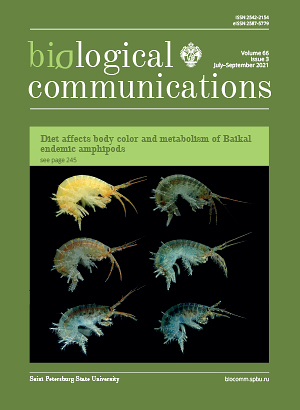Sexual dimorphism patterns of the White Sea threespine stickleback (Gasterosteus aculeatus)
DOI:
https://doi.org/10.21638/spbu03.2021.307Abstract
Sexual dimorphism (SD) in the threespine stickleback Gasterosteus aculeatus reflects the different roles of the sexes in reproduction and their adaptations to different ecological niches. We quantified SD in one population of marine stickleback from the White Sea, collected during the spawning period from three spawning grounds, each at a distance of 5 km or less from the others. We used a landmark-based approach to quantify variation in 44 morphometric linear traits. In total, 749 females and 693 males were analyzed. In males, anterior body parts are larger — the base of the caudal fin and armor structures such as the first and second dorsal spines and the pelvic spine. Females have larger posterior bodies — the abdomen, pelvic girdle and the third dorsal spine. The SD of caudal body parts exhibits complex patterns. In White Sea threespine stickleback, SD patterns are generally similar to other populations of the species, but more often show male-biased patterns. Female-biased size SD may be associated with the female biased sex ratio of White Sea stickleback.
Keywords:
threespine stickleback, sexual dimorphism, morphological variation, body shape, body size, White Sea
Downloads
References
Downloads
Additional Files
Published
How to Cite
License
Articles of Biological Communications are open access distributed under the terms of the License Agreement with Saint Petersburg State University, which permits to the authors unrestricted distribution and self-archiving free of charge.





